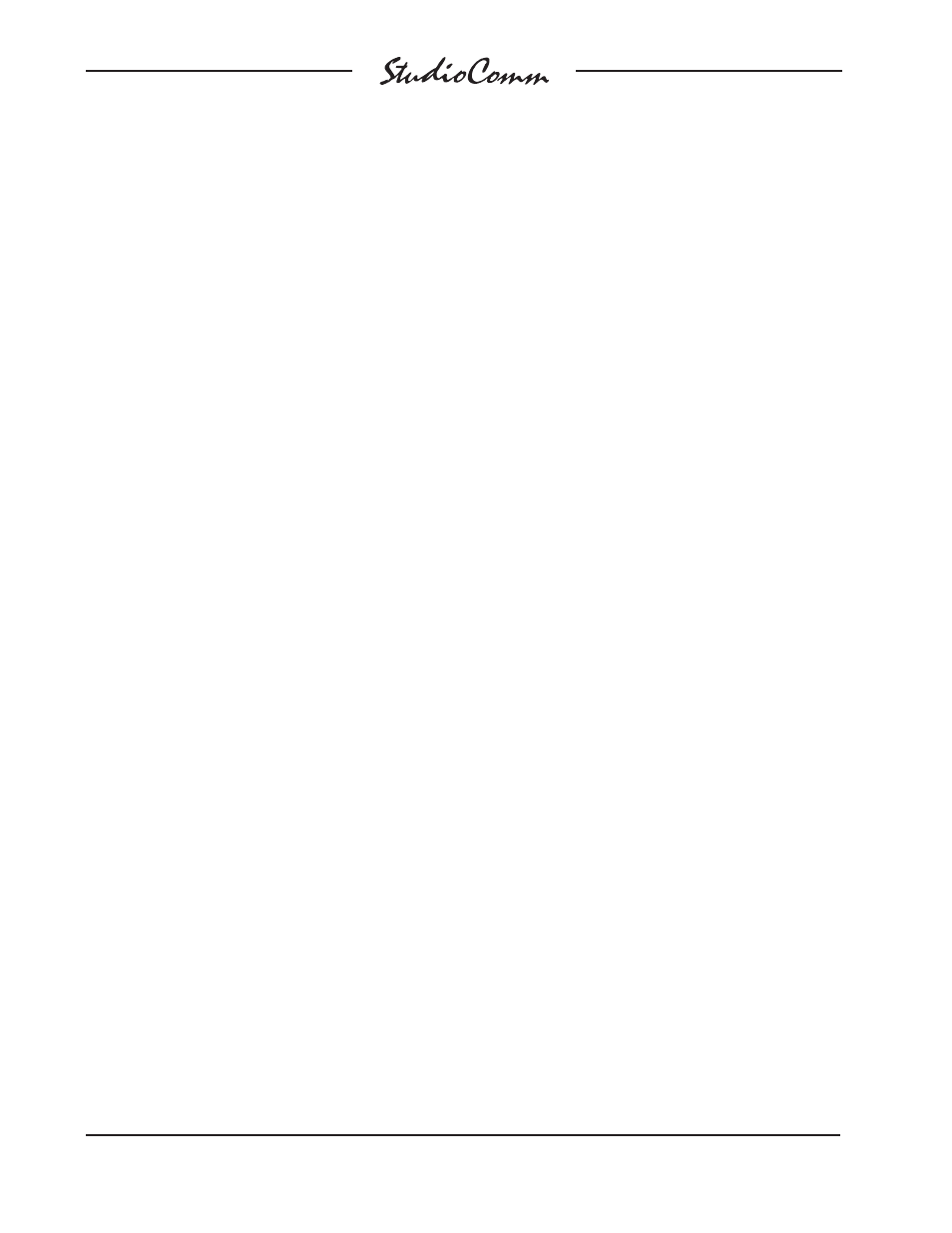Display and display mode – Studio Technologies 76B 2012 User Manual
Page 36

Issue 3, August 2012
Model 76B/77B User Guide
Page 36
Studio Technologies, Inc.
for Surround
Display and Display Mode
The Model 77B’s 4-digit LED display can be
selected to show either the level of the sur-
round monitor output or the dialnorm level.
The display mode button is used to select
the desired mode. Two LEDs are associated
with this button, indicating which mode is
active.
Both modes will indicate level in dB. What
the digits actually represent will depend on
how the Model 77B has been configured.
When selected for the output level display
mode, the surround monitor output level
will be shown as either the amount of at-
tenuation or the sound pressure level (SPL).
If configured for the attenuation mode the
display will show the output level as an
attenuation value in reference to the maxi-
mum output. This is in the form of 0.5-dB
steps less than the maximum of 0.0 dB. So
a display of –40.5 would indicate that the
surround monitor output is set to be 40.5
dB below the maximum level. As the rotary
level control is moved counterclockwise the
output level will go down and the indicated
value will get more negative.
If the Model 77B is configured to display
the output level in SPL, the 4-digit display
will always show the output level in posi-
tive numbers. These numbers are intended
to represent the sound pressure level in
dB SPL, a figure that should directly relate
to the actual sound pressure level that the
loudspeaker system is presenting to users.
(Typically, the level value would actually
be in dBC, the C-weighted sound pressure
level.) When the reference level button is
enabled, or the rotary level control is set so
that the reference level has been reached,
the display will typically show something in
the range of 82 to 87 dB. Assuming that the
monitoring environment has been correctly
calibrated, this would indicate that an aver-
age listening level of 85 dB, for example,
had been achieved.
When the 4-digit display is set for the dial-
norm display mode a much different piece
of information will be shown to the user. It
will show the somewhat obscure but impor-
tant dialnorm level parameter that’s associ-
ated with a surround input source. As has
been covered in other parts of this guide,
dialnorm is intended to provide a numeric
value that represents the average dialog
level associated with an audio-for-picture
element. Technically, dialnorm values can
range from –31 to –1 dB but during actual
operation they will typically be in the range
of –30 to –20 dB. The value may change
relatively frequently in conjunction with
changes to the actual audio signal. This
would be the case, for example, with a tele-
vision program that consists of alternating
program and advertising segments. In other
situations the dialnorm level will only change
when an “on-air” source is switched from
typical station-originated segments to an
extended-duration broadcast program, such
as a live concert event. And on the extreme
end, in some facilities the dialnorm level is
fixed and won’t ever change. That’s not real-
ly in the spirit of what dialnorm is supposed
to accomplish, but c’est la vie. Whatever the
dialnorm level—the Model 77B will display it!
In both display modes a special feature is
provided to assist users in knowing if the
current dialnorm level matches a facility’s
“house” reference. This reference level,
typically in the range of –24 to –27 dB, is
entered as part of the Model 77B’s configu-
ration process. The “dot” in the lower-right
corner of the 4-digit display will light when-
ever the current dialnorm level matches
the stored reference level. Refer to Figure
7. This feature can be useful in broadcast
